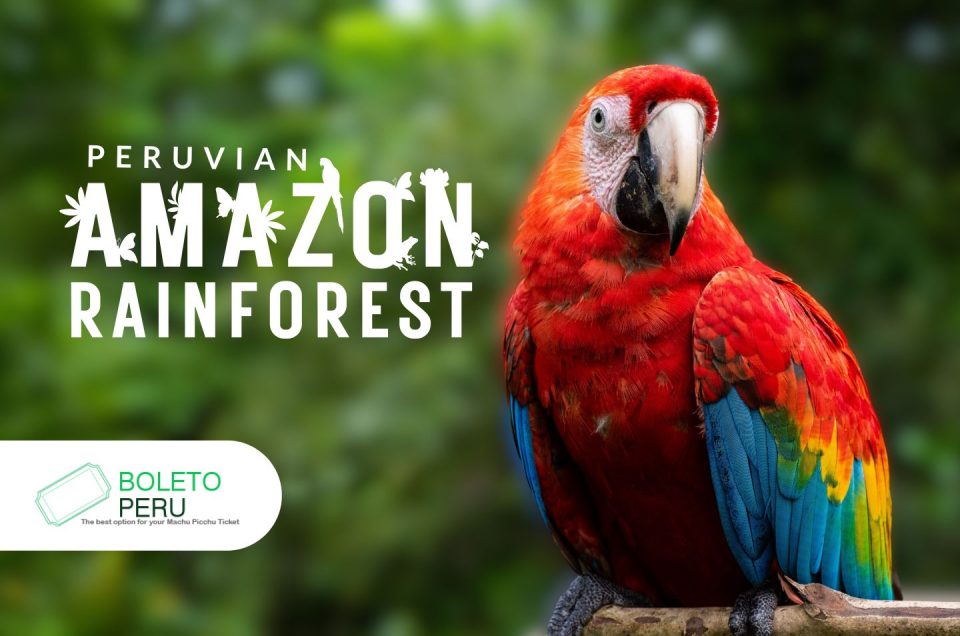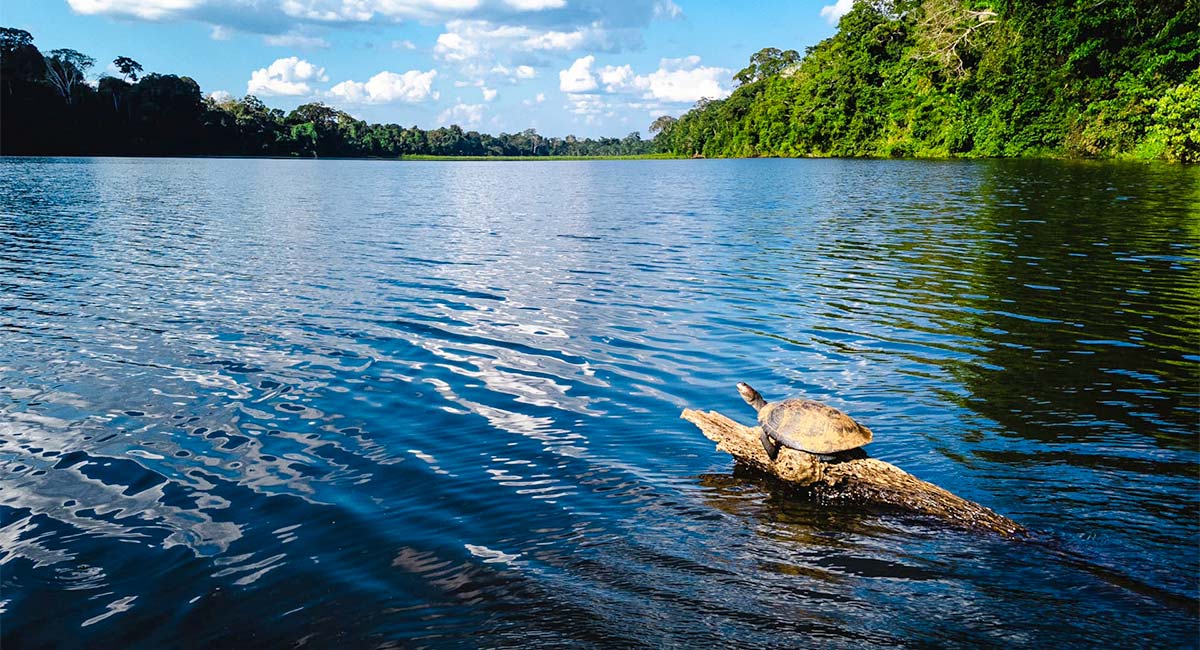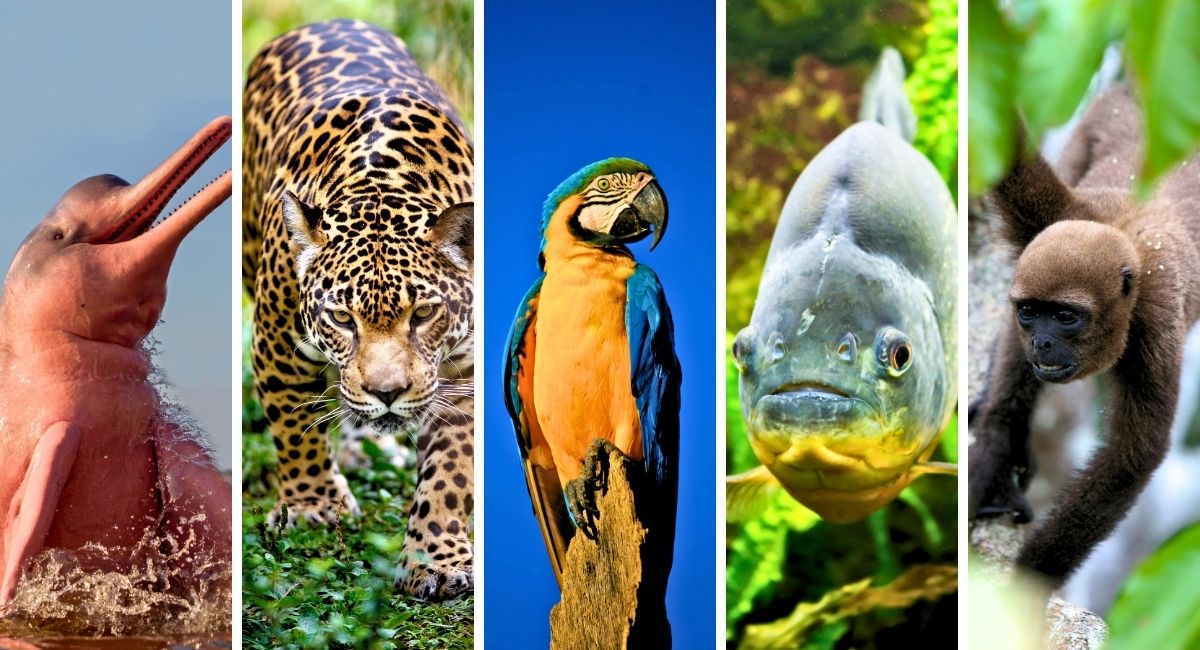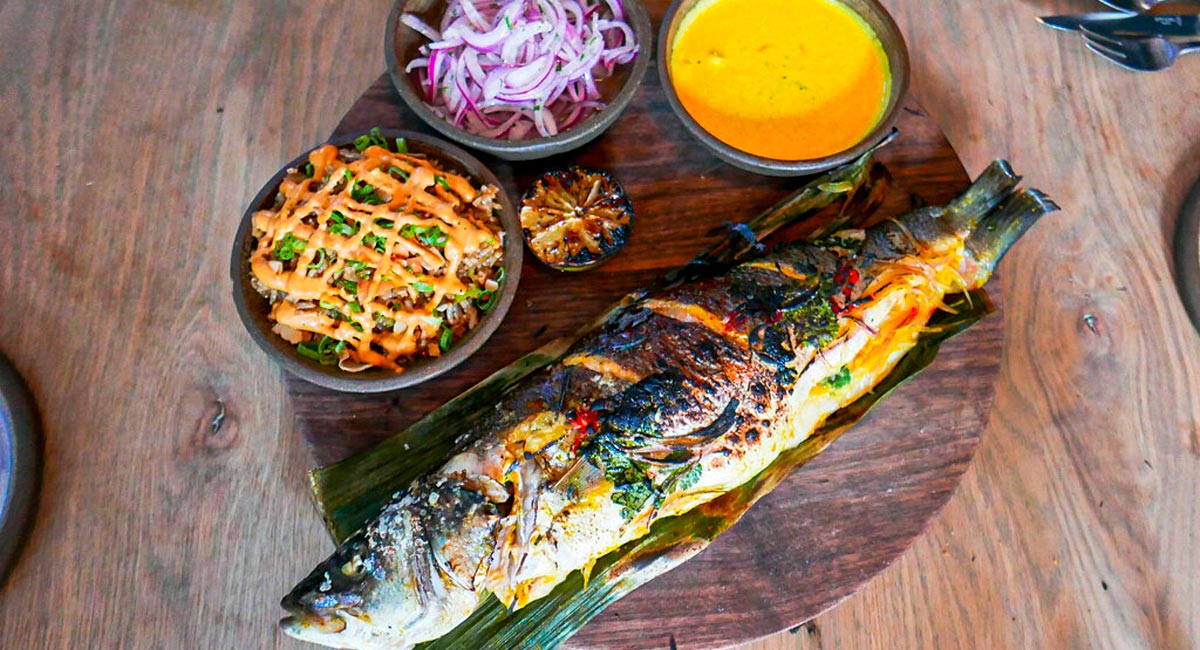The Amazon rainforest is one of the most extensive and biodiverse ecosystems on the planet. In the heart of South America, the Peruvian Amazon occupies a significant portion of the national territory and stands out for its natural, cultural, and ecological richness. It harbors thousands of species of flora and fauna, many of them unique in the world, and is home to diverse indigenous communities that have preserved ancestral knowledge for generations.
This exuberant and profound region is essential for global climate balance and represents a unique experience for those who wish to explore one of the planet’s green lungs. So, if you are interested in visiting and getting to know the Peruvian Amazon closely, here we tell you all the details of this fantastic place.
Where is the Peruvian Amazon Rainforest?
The Peruvian Amazon Rainforest extends east of the Andes mountain range and occupies more than 60% of the national territory. This vast region is part of the Amazon basin, one of the largest in the world, and covers departments such as Loreto, Ucayali, Madre de Dios, San Martín, Huánuco, and part of Amazonas.
Its geography is made up of a network of navigable rivers, humid forests, and extensive plains covered with tropical vegetation. The altitude varies from low areas near sea level to “ceja de selva” (jungle eyebrow) areas, where the vegetation becomes denser and more humid.
Main tourist destinations in the Peruvian Jungle
The Peruvian jungle offers a variety of destinations that stand out for their natural and cultural richness. Each region has its own characteristics that allow visitors to discover jungle landscapes, explore rivers, learn about local customs, and observe species rarely seen elsewhere in the world. Below are some of the most representative places that are part of this vast Amazonian region:
- Iquitos and the Pacaya Samiria National Reserve
Iquitos is one of the largest cities that cannot be accessed by road, which already marks a different experience from the start. It is the starting point for exploring the Pacaya Samiria National Reserve, one of the most extensive in South America. This protected territory is home to forests, blackwater lagoons, and extraordinary biodiversity that includes pink dolphins, manatees, and hundreds of bird species. - Puerto Maldonado and the Tambopata National Reserve
Puerto Maldonado is the gateway to the Tambopata National Reserve, recognized for its high concentration of species in one place. There, it is possible to take excursions along calm rivers, explore jungle trails, and observe colorful flocks of macaws from clay licks. The environment is surrounded by tropical forests inhabited by monkeys, caimans, sloths, and a wide variety of butterflies. - Tarapoto and the Alto Mayo areaTarapoto, located on the border between the high jungle and the low jungle, offers a mix of jungle, waterfalls, and culture. It is a dynamic city from which you can access places like the Ahuashiyacu waterfalls or the Alto Mayo Conservation Area. In this area, there are fragile ecosystems, bird watching routes, and communities that maintain traditional practices of coffee, cocoa, and medicinal plant production.
- Pucallpa and the Ucayali basin
Pucallpa, capital of the Ucayali region, is located on the banks of the river that gives the area its name. From there, it is possible to venture into landscapes dominated by the tropical forest and visit Shipibo-Konibo indigenous communities, known for their textile and ceramic art. Navigation on the Ucayali River allows you to explore little-intervened areas and observe the daily life of riverside towns, as well as species typical of this river ecosystem.
Biodiversity of the Peruvian Amazon
Exploring the Peruvian Amazon is entering one of the most extensive and surprising natural spaces on the planet. This vast region hosts thousands of species that coexist in a delicate balance, sustained by humidity, rivers, and lush vegetation.
Flora and Fauna in the jungle
Amazonian vegetation is composed of giant trees such as the lupuna and cedar, as well as palm trees, ferns, lianas, and medicinal plants. This dense place provides shelter and food for a wide variety of living beings. Many of the plants that grow in the Amazon are still being studied for their unique properties and their ability to adapt to extreme conditions of humidity and shade.
Among the best-known animals are the jaguar, the pink Amazon river dolphin, the sloth bear, the anaconda, and different species of monkeys such as the choro and the fraile. In the sky, macaws, toucans, and falcons can be observed, while fish such as the paiche and the feared piranha inhabit the rivers.
Unique Ecosystems
The Peruvian Amazon presents ecosystems that vary between forests, high jungle, riverbanks, and oxbow lakes. Each one harbors different species and responds to seasonal cycles marked by rains and river flow. These spaces are the scene of natural processes that occur continuously and silently, but which are essential for the balance of the planet.
Must-Do Experiences and Activities
The activities that can be done allow close observation of how this complex ecosystem works, understanding different ways of life, and getting to know realities that are little visible from big cities. Below are some of the experiences that mark a visit to this region.
- Navigate the Amazonian rivers
The rivers of the Amazon allow us to delve deep into the jungle. Aboard traditional or modern boats, visitors travel through channels surrounded by thick vegetation, observing river life: from birds flying over the course to freshwater dolphins briefly emerging to the surface. Journeys can last from a few hours to several days, depending on the chosen route.
- Jungle walks with local guides
Walks along Amazonian trails, always accompanied by local guides, offer a direct way to explore this natural environment. During the tour, details are learned about medicinal trees, animal species, orientation techniques, and typical forest sounds. The practical knowledge of the guide is fundamental to understanding the terrain and moving respectfully through the environment.
- Bird and wildlife watching
The Peruvian Amazon is one of the most biologically diverse territories on the planet. In many areas, it is possible to observe intensely colored birds, such as macaws, toucans, and herons, as well as monkeys, sloths, caimans, or unique insects. To make the most of this activity, it is recommended to bring binoculars and go out at dawn or dusk, when there is more movement in the forest.
- Visits to indigenous communities
Some Amazonian communities open their doors to share aspects of their daily life with visitors. These experiences allow learning about their forms of organization, their use of environmental resources, their artistic expressions, and the value they give to their cultural identity. These are always done voluntarily and with a respectful approach towards those who inhabit these territories.
Amazonian Gastronomy
The flavors of the Peruvian Amazon are found in the local cuisine, which uses products from the tropical forest, prepared with techniques inherited by communities who deeply understand their environment. These culinary traditions are a vital part of Peruvian Gastronomy, offering a unique perspective shaped by the rainforest.
Typical Jungle Ingredients
The most used ingredients are green plantain, cassava, charapita chili, fresh river fish such as doncella or paiche, and fruits like aguaje, camu camu, and cocona.
Traditional Disshes
- Juane: seasoned rice with turmeric and filled with poultry meat, wrapped in bijao leaves.
- Inchicapi: thick soup prepared with ground peanuts, cassava, chicken, and cilantro.
- Cecina: salted and smoked pork meat, served with tacacho (mashed fried plantain).
- Tacacho: green plantain fried, mashed, and mixed with pork rinds.
Exotic Drinks
- Aguajina: natural refreshment made from grated aguaje and cold water.
- Masato: traditional fermented cassava drink, consumed in community gatherings.
- Camu camu: acidic and refreshing juice obtained from a wild fruit rich in vitamin C.
Practical Tips for Travelers
Best Time to Visit the Jungle
The Peruvian Amazon can be visited all year round, but the most recommended months are between May and October. During this period, rains decrease, paths are more passable, and wildlife observation becomes more favorable, as many animals approach the rivers.
Vaccinations and Health Precautions
Before traveling, it is suggested to consult a medical center specialized in travel medicine. It is recommended to get the yellow fever vaccine at least 10 days before the trip. Additionally, it is important to take measures against malaria and dengue, such as using repellent, wearing clothes that cover arms and legs, and sleeping with a mosquito net.
What to Pack in Your Backpack
- Lightweight long-sleeved clothing (thin shirts and pants to protect from sun and insects)
- Hat or cap and sunglasses
- Insect repellent
- Sunscreen
- Rain poncho or raincoat
- Flashlight or headlamp with spare batteries
- Reusable water bottle
- Suitable footwear (trekking boots or closed shoes with good traction)
- Personal medications and a small first-aid kit
- Binoculars (optional, for bird and animal watching)
- Small backpack for daily excursions
Responsible Tourism and Conservation
Exploring the Amazon jungle means committing to its care. Visiting these territories requires a conscious attitude towards the environment and its inhabitants. It is essential to choose experiences that respect the natural balance and the ways of life that depend on it.
Impact of Tourism on the Ecosystem
The growth of tourism in tropical forest areas can lead to negative changes in the natural environment if not properly controlled. The accumulation of waste, the excessive use of local resources, and the alteration of animal routes are some of the most frequent consequences. To avoid irreversible damage, it is necessary to follow practices that respect the limits of the ecosystem.
How to Support Local and Sustainable Initiatives
An effective way to protect the jungle is to choose projects led by communities or groups that work under ecological principles. This can include staying in certified eco-lodges, participating in tours managed by local guides, or purchasing products made in the region with responsible processes. These actions help maintain respectful practices and strengthen local economies.




